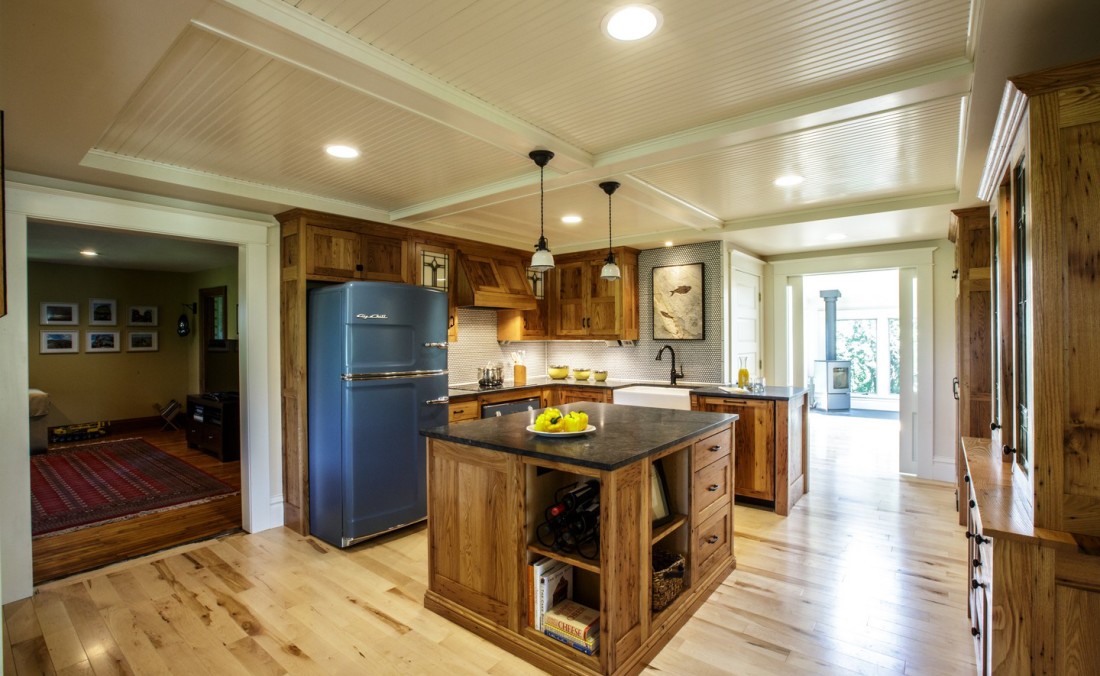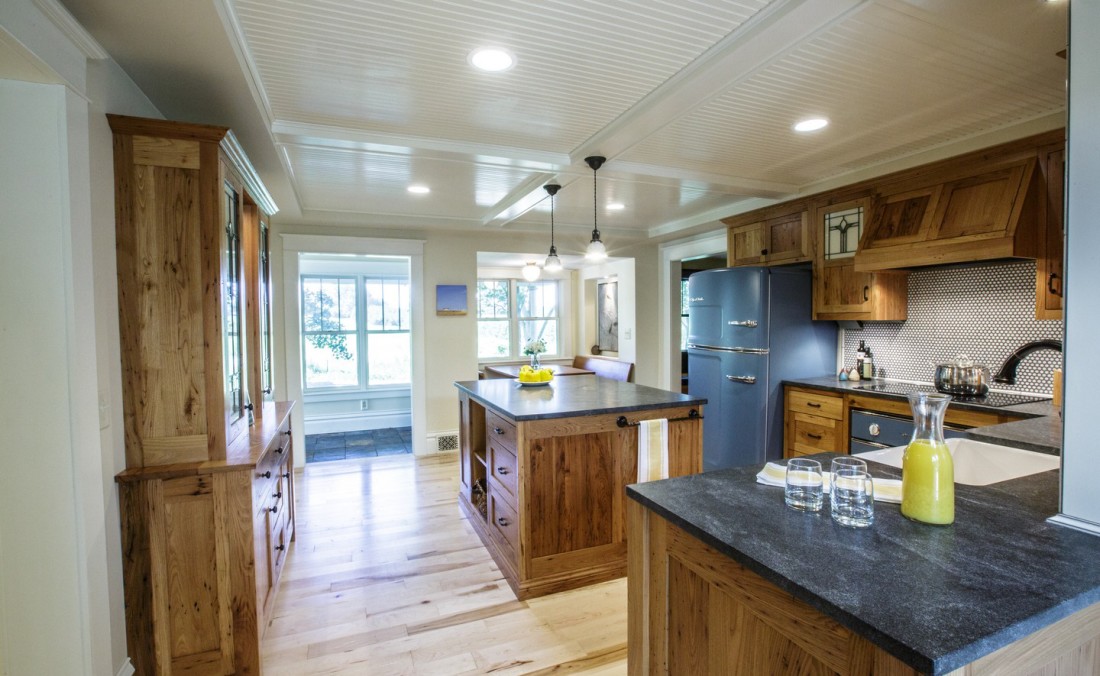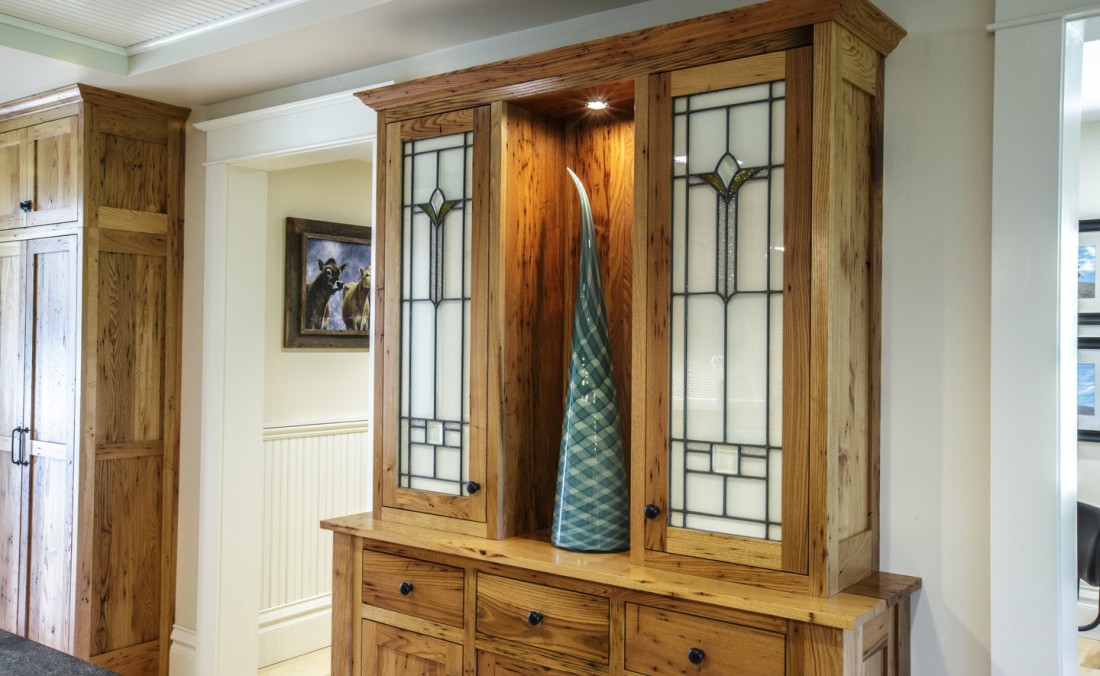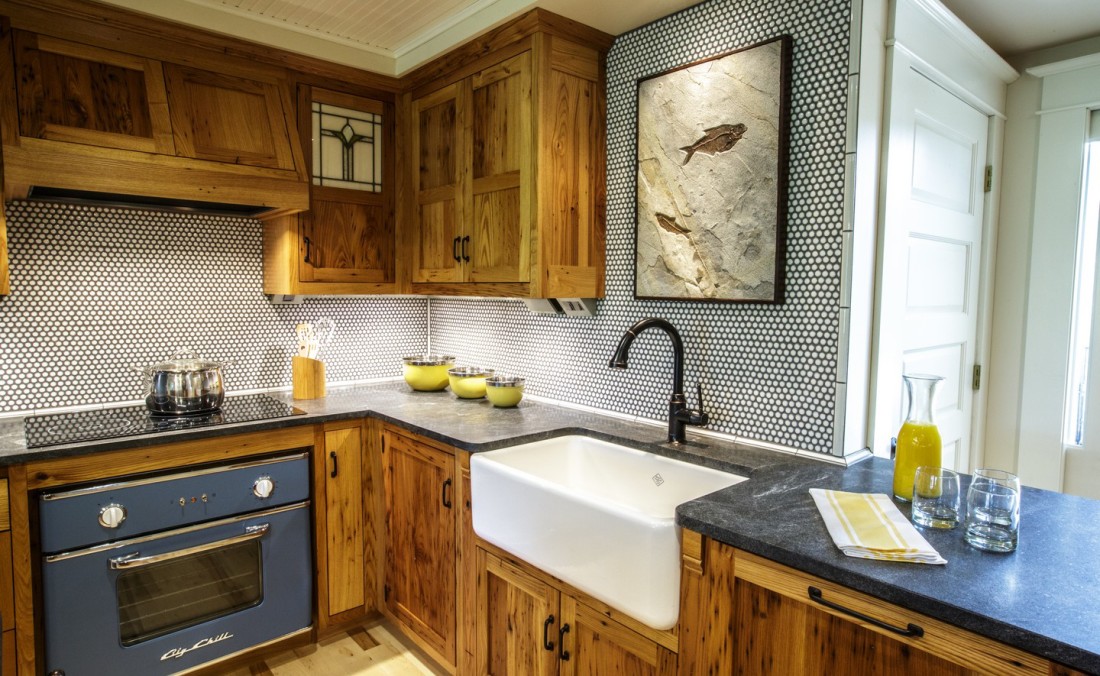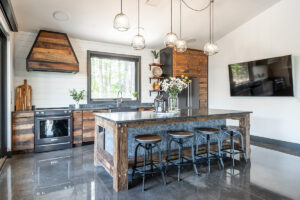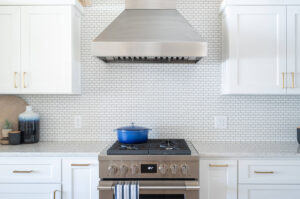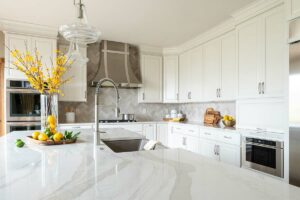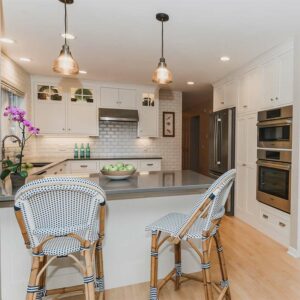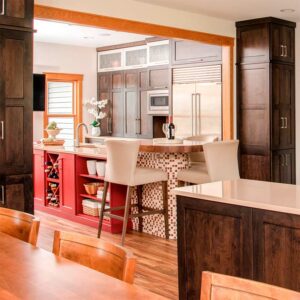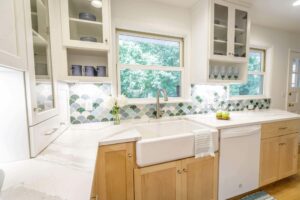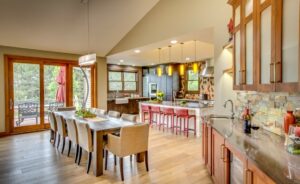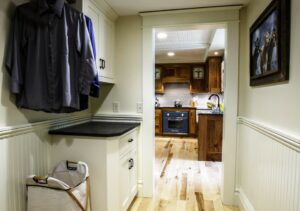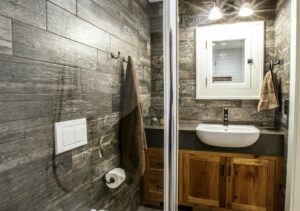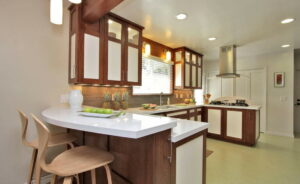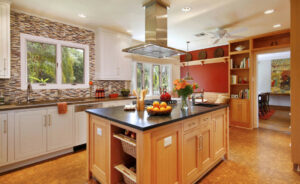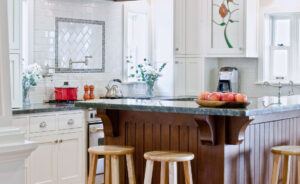50 million years ago an extinct genus of fish called Knightia swam in Wyoming and over time became fossilized. One day they were unearthed and framed as artwork for a science teacher and his family to enjoy. While each piece of their 1902 farmhouse kitchen may not be as old, they all have a sense of history and story to tell.
50 some years ago the homeowner’s father rescued shelving from an old warehouse. The wormy chestnut sat around in his garage until its potential as cabinetry was realized. Integrated with the cabinets were salvaged stained glass doors that were once part of an Arts and Crafts home in Milwaukee. Painted panels were applied to the backs of the glass to highlight the leaded shapes.
The fossil art from Green River Stone was placed above the apron sink as a focal point. The gray honed granite and blue appliances were selected to complement colors in the artwork. The penny round backsplash and retro-styled appliances give nod to a simpler time.
The original kitchen lacked storage, counter space, and a dishwasher. We reorganized the space by moving the refrigerator closer to the cooktop and sink, clearly defining a work zone and separating it from the path of travel from the foyer to the family room. Shifting the living room doorway allowed us room to move the fridge to the same wall as the cooktop. This also gave us a better layout for an island. Removing the broom closet and wall leading to the basement improved sightlines to the family room and freed space for built-in pantries. We created a small peninsula to fit the new dishwasher, in close proximity to the custom hutch that houses the dishes and silverware.
Part of the challenge was working around a new beam that was installed to fixe a sagging ceiling. We designed a faux cross beam that divided the ceiling into 4 quadrants and finished each with beadboard to make it more of a feature.
The clients now enjoy a more efficient kitchen with a retro farmhouse aesthetic that harmonizes with their beloved fossil art.


